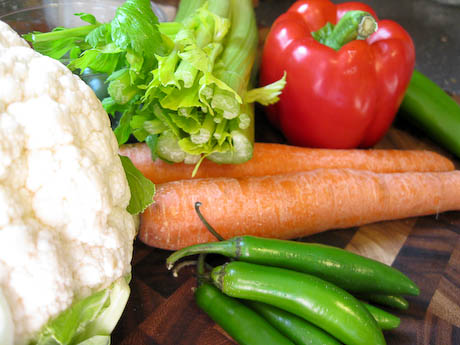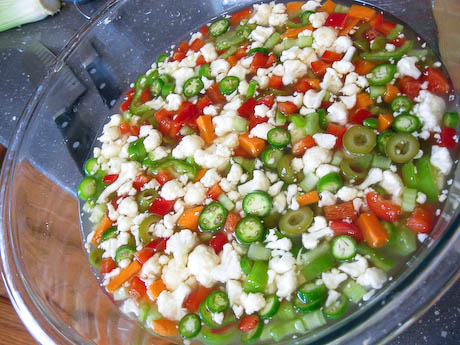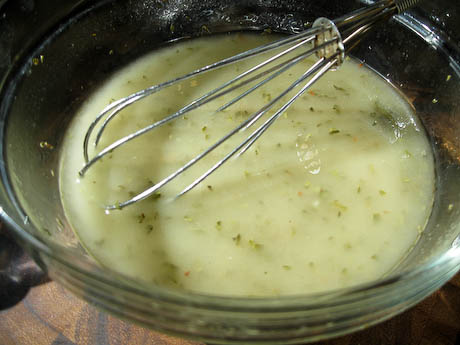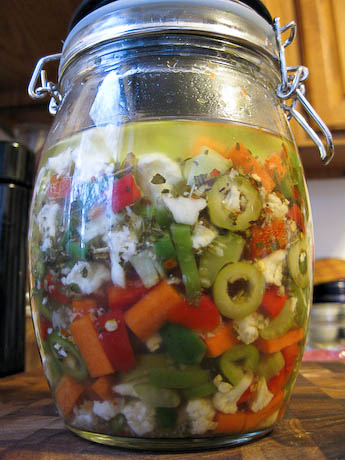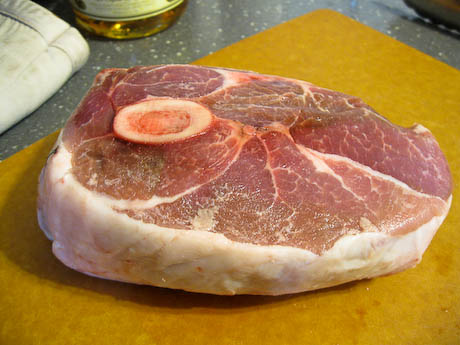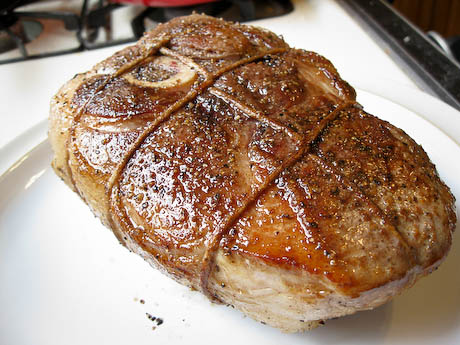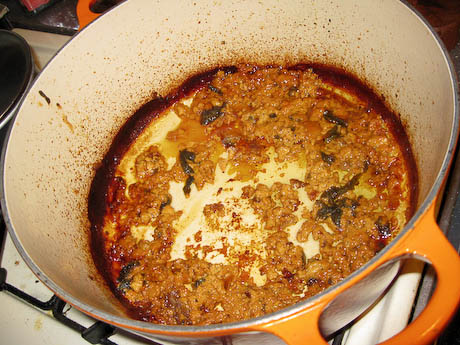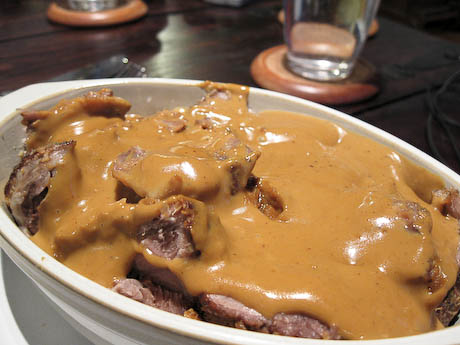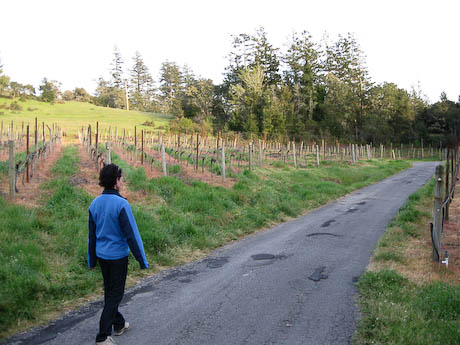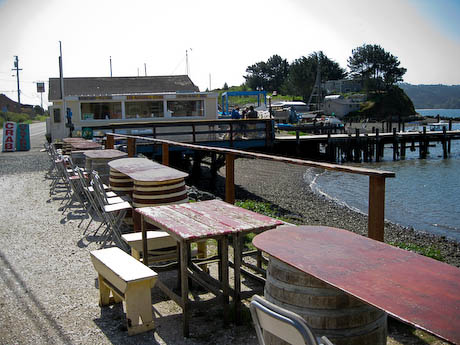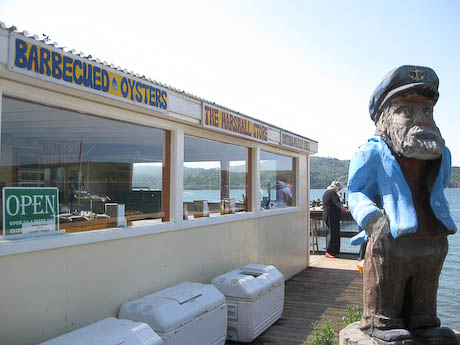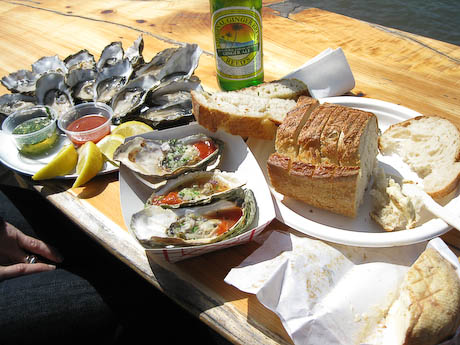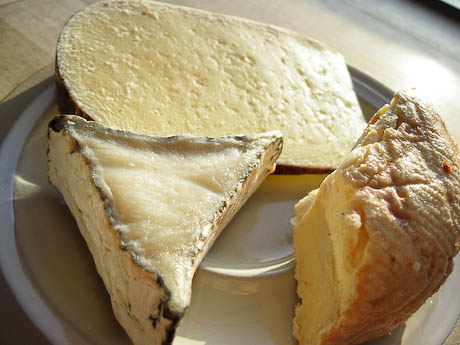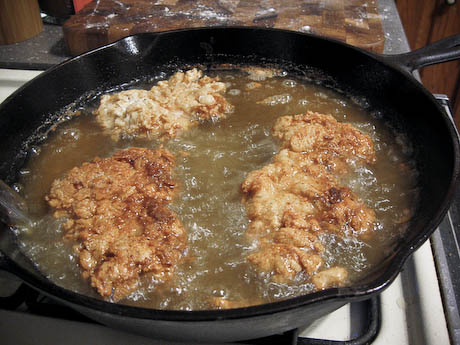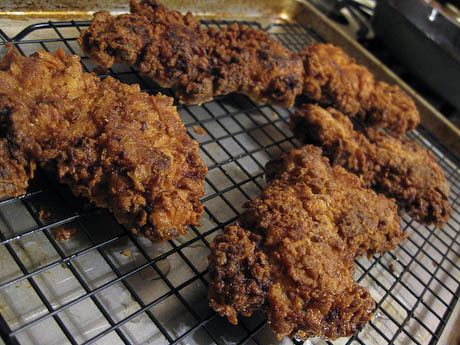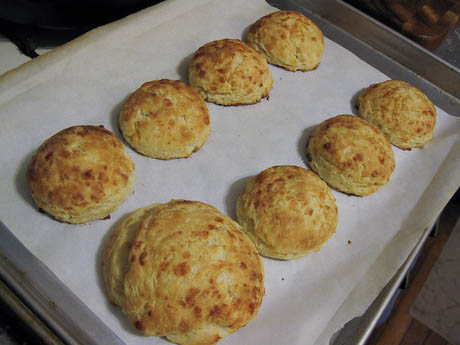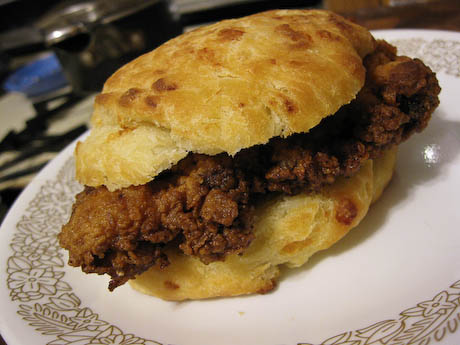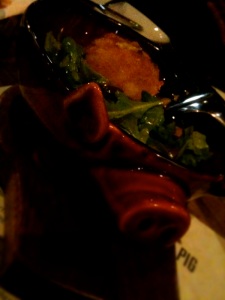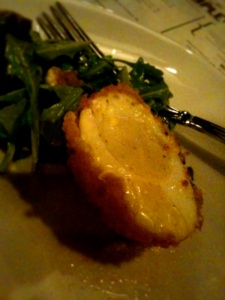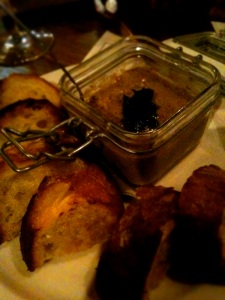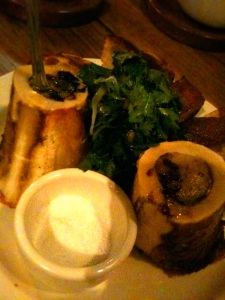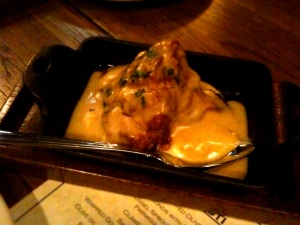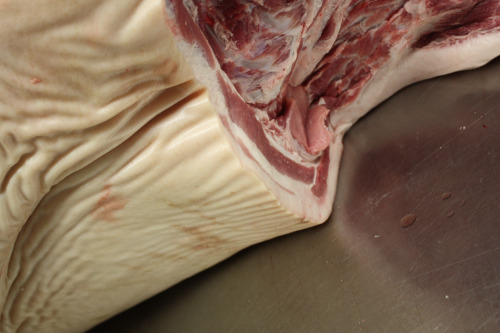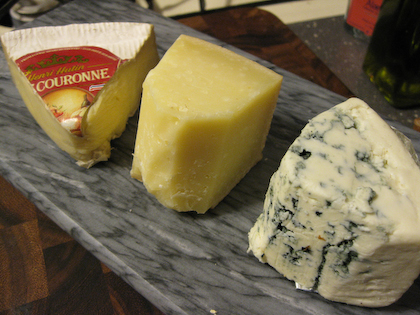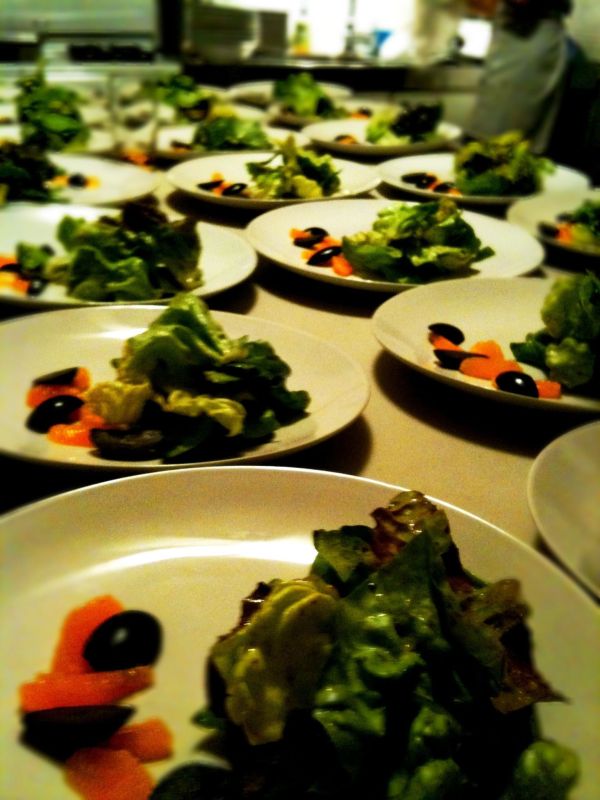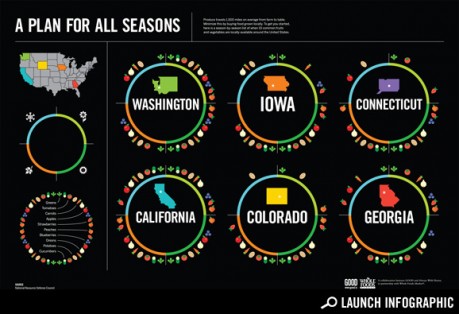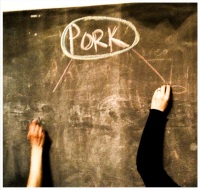I butchered a pig, and now my me is better
I’m not often all that big on rites-of-passage and the like, but I honestly think I can now divide my life between the time before I butchered a pig and the new, better and brighter time after I butchered a pig. Note, if you’re squeamish you may not want to see the pics in this post, but if you don’t mind seeing what meat looks like before being deconstructed forge on ahead.

Giardiniera (or, angel relish)
I’m not 100% willing to commit to this statement yet, but giardiniera just might be the best condiment in the history of ever. It’s crunchy, spicy, oily, salty and probably has antioxidants and omega-somethings because it’s basically all vegetables, right? There is nothing that is not improved with the addition of giardiniera, unless if you hate flavor and happiness.
I was inspired to make my own last fall after having some homemade giardiniera at a Sunday Dinner Club feast (recipe halfway down page). This was all kinds of delicious, but it was more of a tasty antipasto than the fiery italian-beef sidekick that I crave (actually, I would even posit that Italian beef plays second fiddle to the giardiniera in that particular sammich). Apparently, “giardiniera” just means “woman gardener” in Italian, and it’s a very Chicagoan confection. Wake up world–if you’re not onto this stuff, you need to be pronto.
After a quick trip to the google, I found a nice roadmap to make my own at the Paupered Chef. You can read his directions, or I’ll sloppily sum it up here.
For the veggies, I used a cauliflower, one red bell pepper, one anaheim pepper, six serrano chilis, a couple carrots, a celery stalk, and green olives.
Dice em all up to somewhat uniform size, breaking cauliflower florets into bits and thinly slicing the serranos. Everything into a bowl, and add a half cup of salt and cover with water. Cover and let the veggies brine for a day or so in the fridge.
Next day, dump out the brine water and rinse the veggies if you don’t want it too salty. Next, make the pickling liquid with a few cloves of minced garlic, 3 teaspoons or so of oregano, and a couple teaspoons of red pepper flakes. Next time I might add some fennel, too, for a neat counterpoint. Smash that all together until it’s a paste, then add a cup of vinegar. I used unfiltered apple cider vinegar, but in retrospect it might have been a little too assertive. Maybe just plain old white next time. Slowly whisk in a cup of oil (canola or grapeseed or something else lightly flavored) until you get a light emulsification.
And that’s about it. Dump the veggies into however many jars it takes, and add the pickling liquid just to cover. You probably should let it sit in the fridge for a few days to really come together, but if you’re me you’ll be eating it by the spoonful at this point. Right then the non-serrano veggies hadn’t yet mastered the art of being hot from their pepper neighbors, but they were learning and had some decent aftermarket heat, and of course they tasted terrific. If you get a bite with a serrano, though, the spice really picks up with a much fresher flavor than the giardiniera you get at the store, and since nothing was cooked the crunch is fantastic. I’m hoping that the heat will spread out a bit as it sits, but at the rate I’m going through this stuff there might not be time for that.
Milk braised pork shoulder
Inspired by the milk braised pork shoulder we’ve had a time or two at the Purple Pig (and maybe a little bit by Charlie placing one of the finest restaurant orders ever on It’s Always Sunny in Philadelphia), I’ve been wanting to try my hand at milk-braising. We picked up a beaut of a bone-in pork shoulder from the Meadow Haven Farm guy at the Green City Market yesterday for a little trial run. Here it be:
And, after a quick truss, season, and sear:
Just stunning, eh? Pour off the fat and toss in some new butter. Fry a handful of sage leaves for a few seconds, then a cup or two of milk (whole) and I also added some heavy cream because why not. Pork goes back in the pot, and on a low burner partly covered for a couple hours, turning every 30 minutes or so. The milk will clot up into brownish curds, floating in rendered pork fat, and you kind of need to play it by ear, adding more milk as needed. After two hours, my pork was starting to stick a bit to the bottom of the dutch oven, so I moved it to the oven to finish at 300 for another hour, fully covered. The pork was no longer so pretty at this point, covered in curdled milk bits, but totally falling off the bone and wafting off some serious smell-amazing. Most alarming was what was left of the milk-braise liquid. Gah!
If I hadn’t done a bit of research before going in, I probably would have freaked out at this point, figuring the whole thing was a huge kaput mess. But, this is EXACTLY how you want it to look. Spoon off all the fat (there might be a lot) and scrape all the gloppy browned curds into a food processor or blender, and puree it right up. Might need to add some milk or water to loosen it up, but this will essentially turn into this incredible, thick, savory-nutty sauce that’s out of this world. I’m not sure why it becomes so much like peanut butter in both consistency and taste, maybe something to do with the milk fats caramelizing or something. What am I, a milk scientist? The pork itself was tender but a tad dry, so I need to do a little better on that count next time. But with a sauce this killer, you could be eating shoe leather and loving it.
Cheese monged: Sonoma
Lauren and I spent a week on the left coast, and took a few days to drive up the coast to the Russian River valley, where we stayed in the guesthouse on a little vineyard owned by the eminently charming and amenable Al and Virginia. Here’s the vineyard, followed by a shot of our palace:
To say that this place is tucked away would be an understatement. The road that gets you there looks like this: \
One of my big Sonoma plans was to hit the Cowgirl Creamery to witness some cheesemaking firsthand. Alas, I’m also an awful planner and the day we drove through Point Reyes Station they were closed. But, I’d been dying to try their Red Hawk cheese for a while, so we picked up a chunk when we stopped for oysters at a little roadside shack along US 1, which awesomely looked like this:
and:
Now I love me some oysters, but was highly skeptical of BBQ’d oysters. Raw or none at all is how I like them, but the counter guy persuaded us to try a few. So we got half a wheel of Red Hawk, a dozen fresh-as-can-be oysters that grew up a couple miles down the road, and a coupla ginger beers. Here’s the spread:
If you’re good at counting, you’ll notice that this is a pretty sweet “dozen.” Anyway, the three in the basket are the BBQ’d oysters, and my fears of rubbery cooked oyster awfulness were totally unfounded. They’re still somehow raw, but slightly heated with terrific smoky flavor and a nice tart sauce. Not better than raw, but I can fully endorse the BBQ oyster as a valid foodstuff. The Red Hawk is in the lower right–we had a bit of it, but didn’t make it all the way through, so later that afternoon we bought a couple more cheeses to eat in our secluded palace that night. All together now:
At top is a Dry Jack from Vella, on the right it the remaining Red Hawk, and the curiosity on the left is the Bermuda Triangle. In turn:
Vella Dry Jack
Critter: Cow. Place: Sonoma county, CA. Type: Hard. Rawness: Raw! Aged: minimum 9 months.
Another cheese I’ve been meaning to try, and I’m not ashamed to admit that this was almost entirely because I love the name of the cheesemaker: Ig Vella. I feel like if your name is Ig you don’t end up in finance or real estate. Igs are either cheesemakers or maybe cobblers. And sure enough, this Ig is considered the Godfather of the modern American cheese movement. In my mind his hands look like ancient tree roots and his face could stare down a hatchet. Anyway, the Dry Jack is basically a Monterey Jack that’s been rubbed in cocoa powder and aged until hard and, well, dry. The conceit comes from the 1930s when cheesemakers started aging cheeses to appeal to Italian immigrants used to hard cheeses. And sure enough, it was hard, but not as crumbly and stiff as a Parmigiano. I thought it was ok, miles more interesting than supermarket Monterey Jack, but maybe a bit too understated for me. I’d love to try it in a grilled cheese sammy.
Cowgirl Creamery Red Hawk
Critter: Cow. Place: Marin county, CA. Type: Washed rind, triple cream. Rawness: Not raw. Aged: 4 weeks.
So yes, I’ve been wanting to get into some of this stuff since reading about it in Gordon Edgar’s excellent book, Cheesemonger: A Life on the Wedge. It is supposedly the only washed rind, triple cream cheese in the world (washed rind usually means stinky, triple cream always means yum). The rind is runny with pools of reddish-orange goo, the stank was intense and deathy, and the texture was like sticky, slightly runny putty. Sounds like an ideal recipe for gross, right? But that’s pretty much what serious cheeseheads are looking for, I take it. Alas, ultimately this cheese humbled us, try as we might to enjoy it. Now, maybe this piece was a bit past its ideal ripeness, or maybe I’m just not down with the serious cheese-stink, but the best thing I can say about it was that it was “interesting,” certainly complex and earthy and powerful and memorable. But good? Can’t honestly say it was.
Cyprus Grove Bermuda Triangle
Critter: Goat. Place: Humboldt county, CA. Type: Soft. Rawness: Not raw. Aged: ???
Yup. Totally bought this one because it was a triangle. It’s made by the same folks who do the Humboldt Fog cheese with the line of ash down the middle. Apparently they’ve got plenty of ash sitting around, because this cheese has it on the outside. The winning cheese of the night, easily, mild but tangy with three distinct textures: the ashy, bloomy rind, then a layer of somewhat gooey-firm goodness, then a core that’s slightly grittier but no less pleasant. Really just a nice and interesting and delicious goat cheese. Also, it’s a triangle. Neato.
So, all in all we had an informative tour of Cali cheese. But, as you can see from this shot of them in their native habitat, out there pretty much everything gets amplified to amazing.
Fried Chicken Night Is Second to No Night
The gameplan:
Night before:
Throw chicken pieces (if you’re not doing a whole cut-up bird, use thighs, because thighs are the best, boneless for less hassle, bone-in for more tasty) into a bowl, pour in buttermilk until covered (be sure to take a swig or two of that buttermilk for yourself because yum, buttermilk!), then chuck in a LOT of the following: paprika, cayenne, garlic powder, onion powder, mustard powder, salt, pepper. When you feel like you’ve put in enough, put in some more. It should be reddish. It should smell like pure, uncut nose dynamite. It should be next to impossible not to just slurp it all down right then and there. Probably don’t want to, but I’m not the boss of you. Mix it all up, cover, and fridge it overnight.
Day of:
Pull the chicken bowl out and take another whiff. Get real excited. In a second bowl dump in some flour and spike the flour with the same mix of paprika, cayenne, powders of garlic, onion, and mustard, and s&p. Again, in this case, less is less and you want more so sprinkle away with abandon. Add a bit of baking powder, and then here’s the secret step: take a few tablespoons of the buttermilk mixture that the chicken’s sitting it and dump it in the flour mix. Stir it around a bit and let some little clumps form–when you drop the buttermilk-coated chicken in the flour mixture, these cling to the chicken and make for a whole extra layer of little craggy crunchies. In my mind I call them chingleberries. I have been known at this point to take the chicken and send it back through school again with another buttermilk bath and second coating of floury chingleberries. This basically becomes like working with an unstable isotope whose structural integrity could collapse at any moment, but if you want the actual chicken inside to be an afterthought, this is the way to go.
Heat oil (I like to use corn, and make sure to save it afterwards. Last night had some that was right in the sweet spot–generally, the second or third time using the same oil is spectacular, then it completely dies and becomes a brown puddle of muck.) to 350 or so and in they go:
Sizzly. Order up:
Can’t have fried chicken without buttermilk biscuits, right? Had a small philosophical argument with L about biscuits, in which she claimed not to see the point of biscuits unless they have cheese or other goodies in them. My point was that butter and airy flakiness make pretty compelling arguments of their own. But she’s right that adding cheese never hurt anything. Hence, cheddar biscuits:
The big pappa biscuit was made from all the scraps left over after cutting out the others, wadded up into a ball. A biscuit of that magnitude pretty much calls for one thing:
Chickabiscuitwich.
8@ : The Purple Pig
Hit The Purple Pig (tagline: “Cheese, swine, and wine”) last weekend, and there was much yum to be had.
Deep fried deviled egg came in a charming pig platter. I have absolutely no idea how they did it, but it looked just like a deep-fried hard-boiled egg. Then, you cut it open, and the yolk inside is all runny and deviled up.
How’d they do that? I’m guessing syringes were involved. When we ordered, our waitress said she’d have to check if they had any left, and came back and said the chef had only made ten but had two left. What the? It’s friday night folks, you need dozens of these babies. In any case, we completely shamelessly ordered the last two. Sorry about that, rest of restaurant. Totally worth the longing looks from the group sitting next to us at the huge communal table.
Pork liver pate, and they don’t skimp on this stuff. Around the same time the roasted marrow arrived:
Delicious delicious bone butter. I figured the obvious course of action was to piggyback the marrow on the liver:
Everything was pretty spectacular up to this point, but then this arrived:
It’s milk-braised pork shoulder, and all you really need to know is that it was so tender and succulent it served with naught but a SPOON. Oh my. Oh my indeed.
Snout to tail
Friend of Screwtop Randy directed me to this Chicagoist piece, Breaking Down a Pig at South Water Station, which offers a slideshow of butchering a pig to make sure every delectable part gets used up. Obviously, if you’ve got a squeamish streak you probably don’t wanna check it out. But man is it fascinating. I’d try it at home but alas don’t have freezer space for 200 pounds of yum. Or, you know, a spine-grade hacksaw.
“What followed was like a combination of a (particularly tasty) episode of CSI and a scene from Little House on the Prairie.”
Cheese monged: Leftovers
Went down to the deli next to my office for a sandwich this afternoon, and as I was waiting in line happened to be standing next to the cheese section of a little cooler. There’s invariably wedges of Parmigiano-Reggiano and Pecorino-Romano sitting there, but today there was also a half wheel of real-looking (i.e. not factory made) brie along with a few smaller pieces. I figured it was about time for a cheese-for-dinner night, so I grabbed a triangle to go along with a couple of hunks that were leftover from various meals this week–a blue that I’d stuffed inside of burgers (good idea, need to firm up the technique) and some Gruyère used for a quiche (seared mushrooms and caramelized onions ftw). Here they be:
Brie Couronne, Henri Hutin
Critter: Cow. Country: France. Type: Soft; double cream. Rawness: Not raw. Aged: ???
I’ve never been all that awed by brie, but I’m thinking that may be just because I’ve only had crappy brie. Fact about brie: it gets 600% better if it’s just a bit melty. Yes, I know that there are few cheeses that don’t get better as they melt, but the degree to which brie’s yumminess skyrockets is downright alarming. Anyway, we ate this one unmelted and it was simply superb. Let it warm up a bit in on your tongue it just turns to buttery goo in your mouth. I now get why brie matters, and that even though the taste is somewhat delicate and mild, it can still be an intense eating experience. Hard to get a lot of outside info on this cheese, but from what I gather it’s 60% butterfat which is a number I get down with. Fat’s the best.
Roth Käse Grand Cru Gruyère Surchoix
Critter: cow. Country: US (Wisconsin). Type: Firm. Rawness: Raw! Aged: At least 9 months.
Seems like maybe since this is made in Wisconsin they don’t really have any business sticking the accent over that e, do they? But, judging by their name, Roth Käse has no problem dropping accents wherever they so desire. And, I guess they can do pretty much whatever they please as they make a business of cleaning up at cheese awards, and this one in particular gets heaps and heaps of love year after year. I was under the assumption that Gruyère was name controlled, like Parmigiano-Reggiano, and could only be made in Switzerand from hardy Swiss cows in musty Swiss caves, but I guess I was wrong. Apparently, Roth Kase (which is one of the bigger highly-regarded American creameries) uses imported copper vats and maybe even an imported Switzerlander or two to make their Gruyères in the traditional Alpine manner, and might be making the Swiss sweat a bit. I thought it was good, possibly great, nutty and mushroomy and full-bodied and loaded with those crunchy crystals that I adore. All in all, really good, really yum, but why didn’t I love it? I feel like this cheese should have made me crazy, but it didn’t. But I guess it’s hard to knock something for not completely blowing you away.
Roth Käse Buttermilk Blue
Critter: Cow. Country: Wisconsin. Type: Blue. Rawness: Raw! Aged: 6 months
I like having the majority of cheeses on a plate be raw. Feels like I’m sticking it to the FDA somehow, which I know is totally ridiculous but it’s still fun to pretend to be some kind of anti-government-cheese-fiddling pirate. This one’s another winner from Roth Käse. Creamy, tangy and sharp and a bit sweet, though very light on the blue-iness. I like my blues to really wind up and suckerpunch me in the face, so while this is perfectly delicious it won’t make the list of favorites, even though I’m hugely in favor of anything with buttermilk in it, even if only in name. Anyone drink that stuff straight? Heaven. I should find out if there is any actual buttermilk used in this cheese.
/spends an hour in the Google wormhole
Shockingly, no. Or yes. I forgot to stay on course.
Updated cheese power rankings (yup–these are already completely useless, but I’m not one to let anything as inconsequential as uselessness hinder me from comparing apples to oranges):
1. Taleggio
2. Piave vecchio (jumpfrogged the Saint Agur Blue for no real good reason)
3. Saint Agur Blue
3a. Brie Couronne
4. Roth Kase Gruyère Surchoix
5: Covadonga
6. Buttermilk Blue
7. Queso de la Serena (again, may need revisiting)
8. Vacherin Fribourgeois
Guest cookin’
Yesterday, Josh and Christine from Sunday Dinner Club (a mildly secret undergroundish eat-party that you should know about and partake in if you don’t already–despite the name it happens many days of the week) were gracious enough to let me come and bumble around in their kitchen and help prepare a tremedous cassoulet dinner. I didn’t get many pics because they slapped an apron on me and set me to task prepping for dinner, which started with an outrageous seared scallop app on celery root purée, drizzled with a touch of cilantro/toasted cumin seed/serrano chile sauce. My dislike of scallops is pretty much a distant, unpleasant memory by now. Next was a roasted garlic potato soup with a heavenly little pile of nearly purple prosciutto. Then came the star of the show–cassoulet. I’m working from memory here, but I’m pretty sure this thing had garlic sausage, pork shoulder confit, bacon lardons, roasted duck legs, and braised lamb. The point is that it was absurdly good and decadently overloaded with slow-meat deliciousness. It’s really unfair to all other food how amazing this is. Part of my plating duties (there were 26 guests, so plating and serving was a team effort that would have made Henry Ford proud) was to apply the Dijon smear to the cassoulet bowls, and I had a sec to snap a shot, sadly without the cassoulet, but you’ll just have to attend to see what that’s all about.
I also got off a shot of the salads, which thanks to Christine’s guidance I am now familiar with the Zen-like calm achieved by lovingly crafting individual piles of greens. If you look carefully you’ll see a wee glass of scotch among the plates. How’d that get there!
I’d tell you about the mousse and toffee for dessert, but that may just be cruel at this point. What you need to do is get on Sunday Dinner Club’s mailing list and get thee to a feast. I can’t thank Josh and Christine enough for letting me join in for the fun, and know that I’ll keep coming as long as they’ll have me.
Food Map
Via good.is comes this pretty neato interactive map of what eats you can pull out of the ground where and when.
/shakes fist at California while gnawing on carrots, onions, and taters.
The good thing is that we have more carrots to look forward to in Spring!
Also worth a read is Peter Smith’s The Decade in Food. As to be expected, I see a lot of what’s shaped our own eating habits and tendencies (and self-serving desire to blog about same) in there, though I was particularly surprised to learn that in 2008 the FDA approved the meat and milk of cloned animals for human consumption. I honestly have absolutely no idea how I feel about that. A little grossed out, a little impressed.
(thanks to Randy for the tip)
